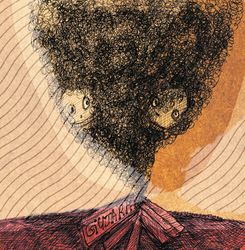I think the lowest point in the Gujarat campaign came when Union Home Minister Amit Shah proclaimed that “such a lesson was taught in 2002” that it has since led to “akhand shanti (eternal peace)” in Gujarat. Yes, the peace of the graveyard.
He was not speaking of the dreadful events at the railway signal outside Godhra, where more than 50 kar sevaks were burnt alive in their coach. For that was not riot, but murder, and those responsible have been sentenced to life imprisonment and death.
The “rioters” referred to by Shah were the inflamed Hindu mobs who massacred at least a thousand Muslims who had nothing to do with what had happened at Godhra. Shah has in fact portrayed the innocent Muslim victims as “those engaging in communal riots”. A few of the Hindu “rioters” have been deservedly sentenced to life imprisonment. Some have recently been released and at least one lot has been received back with garlands and sweets. What “lesson” have they been taught or learnt? That vengeance killing of innocents is to be commended?
He also made the outrageous claim that “in 2002, communal riots took place because the Congress people let it become a habit” and that “if there is anyone who has ravaged Gujarat through communal riots, it is Congress people”. Rubbish. In 1969, when the Congress was celebrating Mahatma Gandhi’s centenary, who was it that stoked such vicious riots in Ahmedabad that the chief guest, Abdul Ghaffar Khan, the Frontier Gandhi, stalked off stating that such violence was totally anathema to Gandhiji’s philosophy? Of course not the Congress, because it would hardly wreck its own reputation on so solemn an occasion. It was the saffron lot. And who in 1985 converted a caste clash into a communal uprising but those whose basic philosophy is to spread hatred against minority communities, especially Muslims.
“Strict action,” Shah went on to claim, “had been taken by the BJP government against those engaging in communal riots”. Really? Then why was Maya Kodnani, one of those eventually found by the courts to have been so mixed up in the rioting as to be deserving of a life sentence, retained in Modi’s council of ministers? Why was Babu Bajrangi allowed his freedom despite boasting that he had personally killed innocent Muslims until the courts took action years later? Why was Manoj Kukrani released on bail to campaign for his daughter after being convicted to life imprisonment for the heinous crimes he committed?
In Vagra, Bharuch district, the same day, Shah asserted that “these people (the rioters) last showed courage in 2002”. Courage? Courage to spear an unborn child to death? Courage to stab a pregnant woman? Courage to assassinate such a noble exemplar of communal harmony as Ehsan Jafri, ex-MP? Courage to rape Bilkis Bano repeatedly in the presence of her daughter and do the same to her and other female members of the family while heartlessly murdering innocent boys and men for no reason other than their faith? Or was the word courage a mistranslation? True, as Shah said, some of “these people” were “one by one... sorted and put in jail”, but where was the Union home minister when, on their being released on the Gujarat government’s order, which is under challenge in the Supreme Court, these criminals were feted and felicitated as “sanskari Brahmins”?
The most laughable of his claims—but for how grim the claim was—was that the BJP government “tightened the noose of the law so sternly that it taught a lesson to those doing the riots”. In fact, the Gujarat government at best stood aside twiddling its thumbs and, at worst, was complicit in the horrors taking place under its watch. Extraordinarily, the Election Commission has let Shah off the hook. But election victories do not absolve lies and hate speech.
Aiyar is a former Union minister and social commentator.


